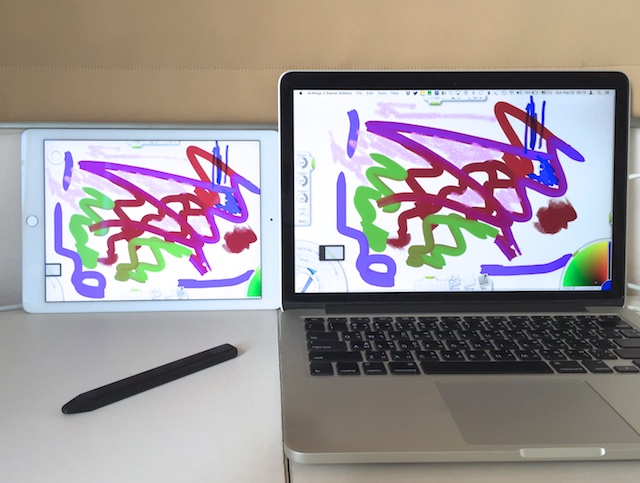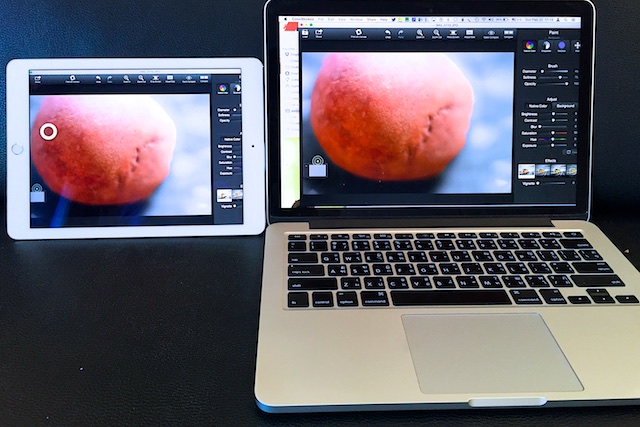Astropad: Exciting App Combo Connecting iPad to Mac Wirelessly for Graphics Input (Amended)

AMITIAE - Sunday 22 February 2015
|
Astropad: Exciting App Combo Connecting iPad to Mac Wirelessly for Graphics Input (Amended) |
 |
|
|
By Graham K. Rogers
As I am currently writing for this week's eXtensions column in the Bangkok Post (Life supplement) about Pencil by 53 - the stylus for the iPad - this was perfectly timed, but deserves much better than the footnote it would have had.
The free Astropad app is available on the App Store. I downloaded the Mac version directly from the Astropad site, where there is a useful video. On the Mac Astropad also opens with a video which makes it clear the application is able to use different types of stylus, although the one from 53 is shown as "coming soon." There is a 7-day free trial with no restrictions like watermarking. The cost is shown as $49.99 and there is educational pricing. It recognised the iPad app when I started that and asked for permission to connect, then I was able to work on the iPad and see my input on the Mac screen.

ArtRage on iPad and Mac
I have had the Starter Edition of Artrage on the Mac (now v 2.5) for a number of years and love the way colors are merged with some of the brushes. When the iPad version of ArtRage arrived ($4.99), I downloaded that right away. There is also a version of ArtRage for the iPhone ($1.99).

ArtRage
The working screen itself was unaffected by this sizing: input displayed perfectly on the Mac almost the instant I drew on the iPad. Display speed and scrolling speed are adjustable. The developers use a technology they call Liquid which allows faster input display when using wireless connections.

Launchpad
In each of the graphics programs that I tried I found two areas that caused minor problems: selecting a file to import; and screen size (see Additional Comments, below). As with ArtRage, some controls may disappear off the sides, particularly in full screen mode. ArtRage only works full screen, while Color Strokes can be resized on the Mac and the screen position adjusted. While it is possible to work in certain applications, it may not be best to work via Astropad with all. The best results come with those apps that needed fine adjustments and drawing input. Of the few I tried ArtRage and ColorStrokes worked best.

ColorStrokes
Additional CommentIn one of those "aha!" moments that some people have when they wake up, I had some thoughts about the display areas available to users on the iPad. This is delineated on the Mac by a dotted rectangle. This matches the resolution of the iPad, so this is not a problem (as above) but a feature.I later checked the screens: the rectangle can be moved and resized. A zoom control also allows for 100%, 200% or Full Screen to be used. Of course, with the respective screen sizes of the two devices, what you gain on one, may be lost on the other, so with some applications, adjusting the screen to make all tools available (as with ArtRage) may mean that the editing area is reduced.
Graham K. Rogers teaches at the Faculty of Engineering, Mahidol University in Thailand where he is also Assistant Dean. He wrote in the Bangkok Post, Database supplement on IT subjects. For the last seven years of Database he wrote a column on Apple and Macs. He is now continuing that in the Bangkok Post supplement, Life. |
|

For further information, e-mail to
Back to
eXtensions
Back to
Home Page